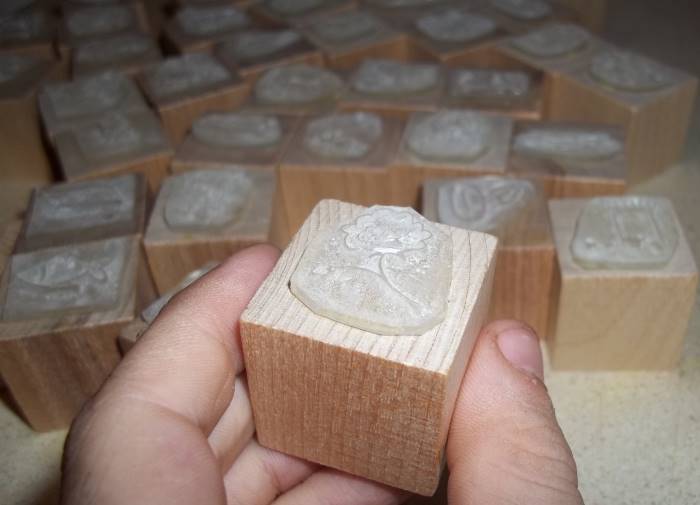Workbooks in Montessori? Egads!
Some history:
Years ago, my mother gave my son a "workbook" with the Sesame Street
character Elmo. The book went through quantities of 1-10, colors and
probably a few other concepts I can't remember. At age 3, Legoboy loved
it. He was "doing school" as he had seen many of my daycare children
doing their homework - mostly he just colored it in. A year later, he
picked it up again and carefully filled out each page, only occasionally
asking me for clarification on the instructions (yet insisting he
couldn't read, rather insisting he was just "figuring it out from the
pictures" - ok, maybe. Doubtful.).
When my elementary trainers found out my son was using a workbook (let's
forget the part where they know I am a devout Catholic, I intended to
homeschool him, and all the things they did NOT know about our home
lifestyle (attachment parenting, Montessori materials at home even when
he attended a Montessori school - yeah, I was the black sheep of the
training already ;) ) ---- there were no uncertain terms about the
damage I was doing to my son. My response: he enjoys it, he learned all
that information from real life experiences so this was just
consolidation, and it was a gift meaning it is not something I
intentionally purchased nor intended to use on a regular basis. NOT
going to hurt him!
The response: arsenic is deadly in small portions.
I just raised my eyebrow and smiled that mom-smile-of-death that says "Don't even go there."
History part 2: See this post on how we utilize the local educational
expectations (public school standards) in our home - namely the
age-equivalent of 3rd and 6th grades.
Flash forward to the present-day:
Legoboy finds out that the local public school kids know something about
weather studies - a topic that has never drawn his interest. This past
week, however, it drew his *attention* - and in the Montessori-world,
that is close enough to interest, with a slightly different response.
See, he tells me, "Just the facts, please. Basically, I just want to
have a conversation. Can we do something along the lines of a
lightunit?"
(yes Legoboy uses the word "basically" at the start of many sentences - all drawn out - baaaasssiklyyy)
Oh - and what is a lightunit? Close family friends of ours utilize a
curriculum from Christian Light Publishers. Each subject for each year
is broken down into 10 workbooks, that they call lightunits. We have
utilized components here and there over the years; for several months,
due to personal circumstances, we had to get away from the directly
Montessori materials for a while, during a time it was less easy for him
to plan out his own studies to work on away from home - so we used
specific topics of lightunits to fill in the gaps. And then, not every
lesson, not every page within a lesson, and not always every question on
a page.

Lightunits are designed to be as child-independent as possible. MANY
people tell me, "see it's just like Montessori." Ummmm. That's not
Montessori at all, actually; Montessori has a connection between
real-life, face to face human beings sharing information and
experiences, then the child planning his own follow-up studies in
cooperation with the adult who guides his work and assures that proper
hands-on real life experiences are available to meet the needs of the
particular child before him, something no published step-by-step
curriculum can replicate. (but by then, the person who thinks CLE and
Montessori are alike is already off doing something else)
While thorough, and the CLE curriculum does trust that a child can learn
more abstract concepts if presented properly at a younger age -
therefore a curriculum I feel is much more age-appropriate than most -
let's just say there was utter relief to come back home to using the
Montessori albums full-time.
On to Weather:
Well, we happened to have some of the science lightunits boxed up - and
sure enough, in the level 4 set was a lightunit on nothing more perfect
than "Weather." The demonstrations within use very basic at-home
materials (absolutely nothing fancy until you need the thermometer with
Celsius and Fahrenheit (can be two separate thermometers, but they need
to measure down into cold temps as well as warmer temps - but our home
thermometers that go that high are for cooking - and our cold temp ones
aren't aligned well enough for the activity that needs it --- so I
printed a chart to cover that part).
And I have to admit. There is something comforting on the part of the
adult to hand a child a workbook and say "do such and such pages" (I've
not actually had to say to him, since this was his choice); check it
when he's done; light conversation and move on. It's so easy. And I don't have materials to prepare, I can DO anything else but sit with him to show him how things work.
But 1) no human connection.
2) I'm not with him - might as well send him to school.
3) If he hasn't truly learned it, I'll spend MORE time working with him - or he'll spend MORE time in remediation than if he'd learned it well, with the proper real-life experience to begin with.
4) Definitely better to go with the Montessori materials and presentations - sure, the child might get the concept quickly, but the child's time is not wasted, true mastery is achieved and you have time for doing "attention vs interest" things via workbook ;)
In my mind, I believe he
has learned the material. But has he really? He's not extending the
knowledge any further than using the vocabulary words appropriately
(look at all that precipitation!), like he would with his other studies.
But again - this was an "attention to" a topic, not an "interest in".
His goals seem accomplished; the upcoming public school standard on
weather will be fulfilled. And perhaps he will come back around to it
and do his own thing later. He has the keys he needs (via the elementary
Montessori geography album - work of air, work of water, sun and
earth...).
I think I am reticent about this because 1) his typical studies are
intense and deep and there are clear signs he is really getting it.
2) while I trust the information in the book, it was just ONE source of
information - and we are much more of primary source people here,
utilizing a wide variety of resources when primary sources are harder to
obtain or understand.
But I will force myself to let this one go.
- Legoboy set a goal;
- he found
suitable resources to meet that goal;
- and he achieved his goal.
So yeah. We did a workbook. Well, HE did a workbook. I guess I see it as more of a study guide. Since it is one teeny tiny component of a much larger homeschool and life and experience, he knows that should he have true interest, he can always delve deeper.
How would I have responded if this were a true interest? At this age (10), it's not even so much MY response as my SUPPORT:
- Look to the related key album pages for some review, specifically with weather in mind
- Library trip for books and other resources they have
- Netflix, educational websites for interesting videos
- Noted the weather throughout a day, from one day to the next, start noting patterns including temperatures, barometer readings, etc.
- Watch weather reports on the news
- Read through weather websites: wunderground.com is useful
- Through all of that, different types of severe weather would have come up - probably inciting some type of interest in a particular form: hurricanes or tornadoes or the like. Study them - watch StormChasers, etc.
- Somewhere in all of that, we probably would have come up with some good demonstrations or even experiments to try out. We'd then check for materials and try them out.
- Etc.































